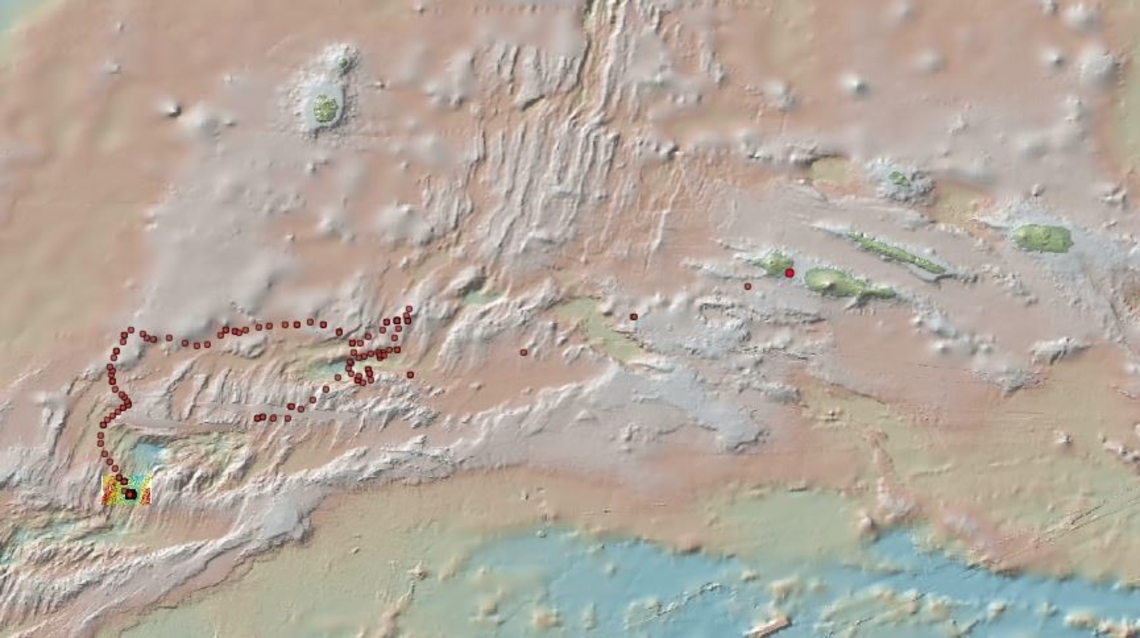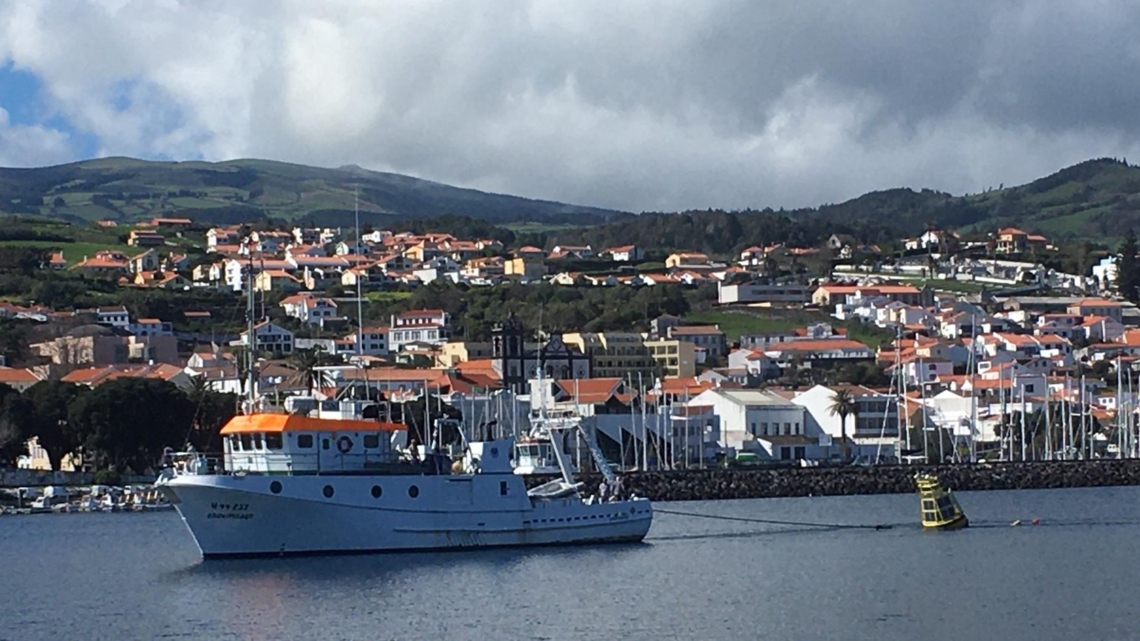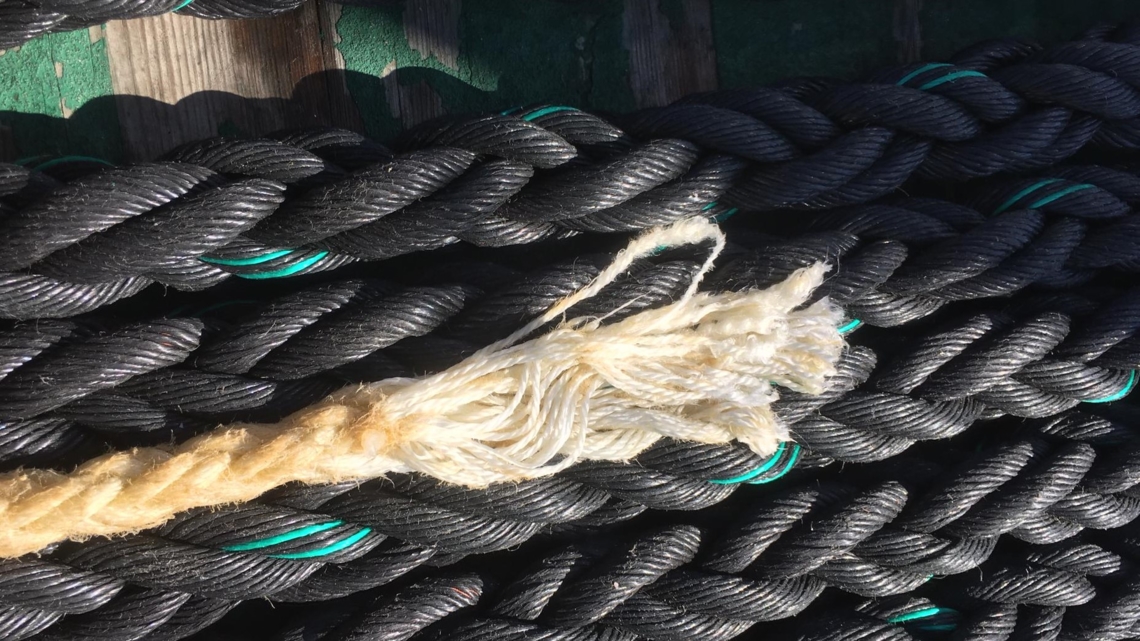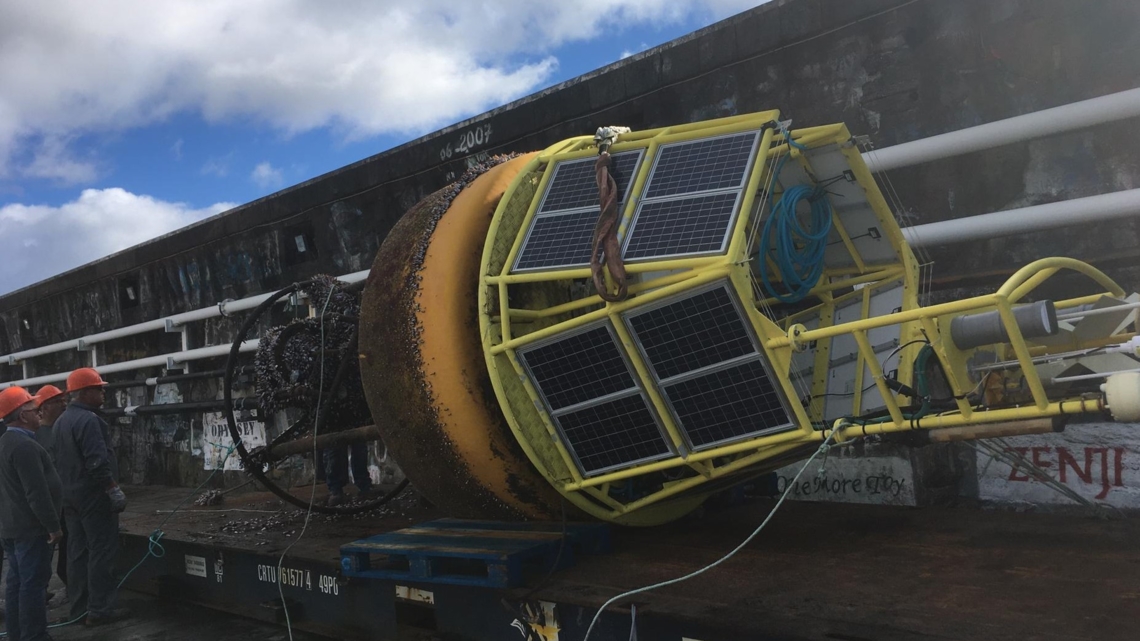EMSO-Azores: Communication with the sea floor stopped due to the buoy incidental drifting
On February the 21th, the EMSO-Azores relay buoy started drifting and communication with the seabed stations stopped. The Ifremer engineering team tracked its route thanks to the GPS data sent every 6 hours. In the first days, the buoy was pushed by currents and winds toward the Azores islands then inverted their influence and brought the buoy back to its initial position.
(1) BOREL trajectory during its getaway, (2) BOREL and the R/V Archipelago in Horta’s harbour, (3) The buoy line rupture, (4) BOREL secured in Horta. | |||
The recovery was organized quickly with our colleagues from IMAR (Portugal) and as soon as the meteorological conditions were good, the R/V Archipélago was sent on site to recover the buoy. The crew of this small oceanographic vessel decided to tow the buoy. Before doing so, divers recovered the sensors still attached to the remaining part of the mooring cable, then fixed a cable between the buoy frame and the rib of the vessel. The operation ran smoothly and the buoy safely reached Horta harbor on March 16th after more than 20 drifting days and a 3 day recovery operation.
The Ifremer team was impatient to get the first picture of the mooring line rupture. Did the line break due to the huge stress it withstand? In fact, this year, the meteorological conditions were especially severe. On October 2nd, the buoy endured extreme conditions during the Lorenzo storm with winds gusts up to 70 knots and waves higher than 10 meters. It remains a real technical challenge to design a long-term mooring for such an exposed area as the Mid-Atlantic Ridge! However, the shape of the rupture turned out to be very straight which is not typical of a damage under extreme stress. The failure is most probably due to a fishing gear. Anyway, the buoy is finally secured in Horta harbour until our next EMSO Azores maintenance cruise scheduled in July this year.
Great thanks to our EMSO colleagues from IMAR!




